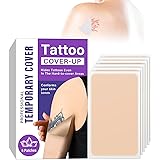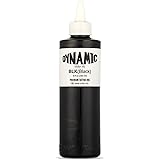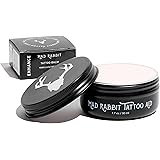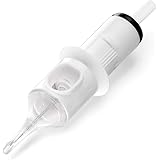Ensuring the proper healing of a new tattoo is paramount for preserving its vibrancy and definition for years to come. In fact, following a diligent aftercare routine for at least 30 to 40 days can significantly impact the final appearance of your body art. The accompanying video offers a concise overview of essential steps, and this article further expands upon these critical practices, providing deeper insights into how your new tattoo aftercare should be managed effectively.
Understanding New Tattoo Aftercare: A Comprehensive Guide
The journey to a beautifully healed tattoo begins immediately after the needle leaves your skin. A meticulous aftercare routine is not merely a suggestion; it is a vital component of the entire tattooing process. Ignoring these instructions can potentially lead to complications such as infection, color fading, or even scarring, thus compromising the artistry and your investment.
Each step in the aftercare process serves a specific purpose, contributing to the healthy regeneration of your skin and the preservation of the tattoo’s integrity. By adhering to these guidelines, you are actively participating in protecting your new body art. This guide is designed to provide you with detailed information, ensuring that your new tattoo heals perfectly, reflecting the vision you initially had.
The Critical First Step: Proper Cleaning for Your Fresh Tattoo
As highlighted in the video, cleaning your new tattoo twice daily is an absolute necessity. This regimen is primarily designed to remove any accumulated dust, excess ink, or dried blood that could otherwise foster bacterial growth. The chosen cleansing agent plays a significant role in this process; an antibacterial soap is strongly recommended for its germ-fighting properties.
Consider using gentle, fragrance-free options like Dove, Johnson and Johnson Baby Soap, or Pears, which are known for being mild on sensitive skin. To clean effectively, a good foam should be generated from the soap and gently applied over the tattooed area. This action helps to lift away impurities without aggressively scrubbing the delicate, healing skin, which could cause irritation or damage.
Imagine if your new tattoo is not cleaned regularly; bacteria from everyday exposure could easily accumulate, potentially leading to an infection. Subsequently, the area should be rinsed thoroughly with lukewarm water until all traces of soap and debris have been completely washed away. Patting the area dry with a clean, soft paper towel or cloth is also crucial; rubbing should be strictly avoided to prevent skin aggravation during this delicate period.
Nourishing Your Tattoo: The Importance of Moisturizing
Once your tattoo has been meticulously cleaned, the next vital step involves nourishing the skin to promote optimal healing and prevent dryness. A suitable tattoo aftercare product or a gentle moisturizer like Cetaphil is highly recommended for this purpose. The aim is to keep the skin hydrated without suffocating it with excessive product.
A very thin layer of moisturizer should be applied across the entire tattooed area. This application ensures that the skin remains supple, aiding in the healing process, and reducing itching, which is a common sensation during healing. It is imperative that the skin is not made overly oily, as this can trap moisture and create an environment conducive to bacterial growth, possibly leading to breakouts or clogged pores on the delicate skin.
Consider a scenario where too much moisturizer is applied; this could prevent the skin from breathing properly, potentially hindering the natural healing cycle. The key balance is achieved by providing just enough hydration to keep the skin comfortable and aid in its regeneration. Regularly moisturizing, especially after each cleaning session, helps to maintain the skin’s barrier function and supports the long-term health and appearance of your tattoo.
Essential Precautions for Optimal Tattoo Healing
Beyond cleaning and moisturizing, several lifestyle adjustments are absolutely necessary for the 30 to 40-day healing period. These precautions are designed to protect the fragile new skin and prevent complications that could compromise your tattoo’s integrity.
Avoiding Heavy Lifting and Strenuous Activities
During the initial healing phase, excessive physical strain on the tattooed area should be diligently avoided. Heavy weightlifting or engaging in other strenuous activities can cause the skin to stretch and flex excessively. This movement can reopen scabs, prolong healing time, or even lead to distorted lines and patchy color, particularly if the tattoo is located over a joint or a muscle group that undergoes significant movement.
Imagine the healing skin as a delicate new canvas; any forceful stretching could disrupt the intricate work of regeneration. Furthermore, intense physical activity often leads to increased sweating, which can introduce bacteria to the healing wound and create an environment ripe for infection. Therefore, it is advised that these activities are paused or significantly modified until the tattoo has fully settled and the skin has completely closed.
Steering Clear of Swimming and Water Immersion
Direct immersion of your new tattoo in water, such as during swimming in pools, lakes, oceans, or even prolonged baths, is strictly prohibited. This restriction is primarily due to two significant risks. Firstly, various bodies of water, especially public pools, are teeming with bacteria and other microorganisms that can easily enter the open wound of a new tattoo and cause severe infections.
Secondly, chlorinated water or saltwater can severely irritate and dry out the healing skin, potentially leading to fading or an adverse reaction. Consider the possibility of harmful chemicals in pool water stripping away the natural oils your skin needs to heal, or of bacteria-laden lake water entering an open wound. Therefore, short showers are acceptable, but any activity that involves submerging the tattoo should be postponed until the artist advises it is safe, typically after the initial healing period is complete.
Protecting Your Tattoo from Direct Sunlight
Exposure to direct sunlight is another major threat to a new tattoo’s healing and long-term appearance. Ultraviolet (UV) rays can not only cause a painful sunburn on the sensitive healing skin but also lead to significant fading of the tattoo’s colors. The delicate skin is much more susceptible to sun damage, which can alter the pigment and cause premature aging of the tattoo itself.
Imagine the vibrant colors of your new tattoo being dulled by prolonged sun exposure during its most vulnerable stage. During the initial healing period, the tattooed area should be kept completely covered with loose clothing when outdoors. Once fully healed, consistent sun protection with a high-SPF sunscreen becomes a lifelong commitment for preserving the tattoo’s vibrancy. This dedicated approach to sun care ensures that your investment in body art is protected from the damaging effects of UV radiation.
The Longevity of Your Tattoo Relies on Proper New Tattoo Aftercare
Adhering to these meticulous aftercare instructions for 30 to 40 days is not merely about preventing complications; it is about ensuring your new tattoo heals beautifully and retains its crisp lines and vibrant colors for many years to come. The effort invested during this critical period directly correlates with the longevity and aesthetic quality of your body art. A well-healed tattoo is a testament to both the artist’s skill and the wearer’s dedication to proper new tattoo aftercare.











